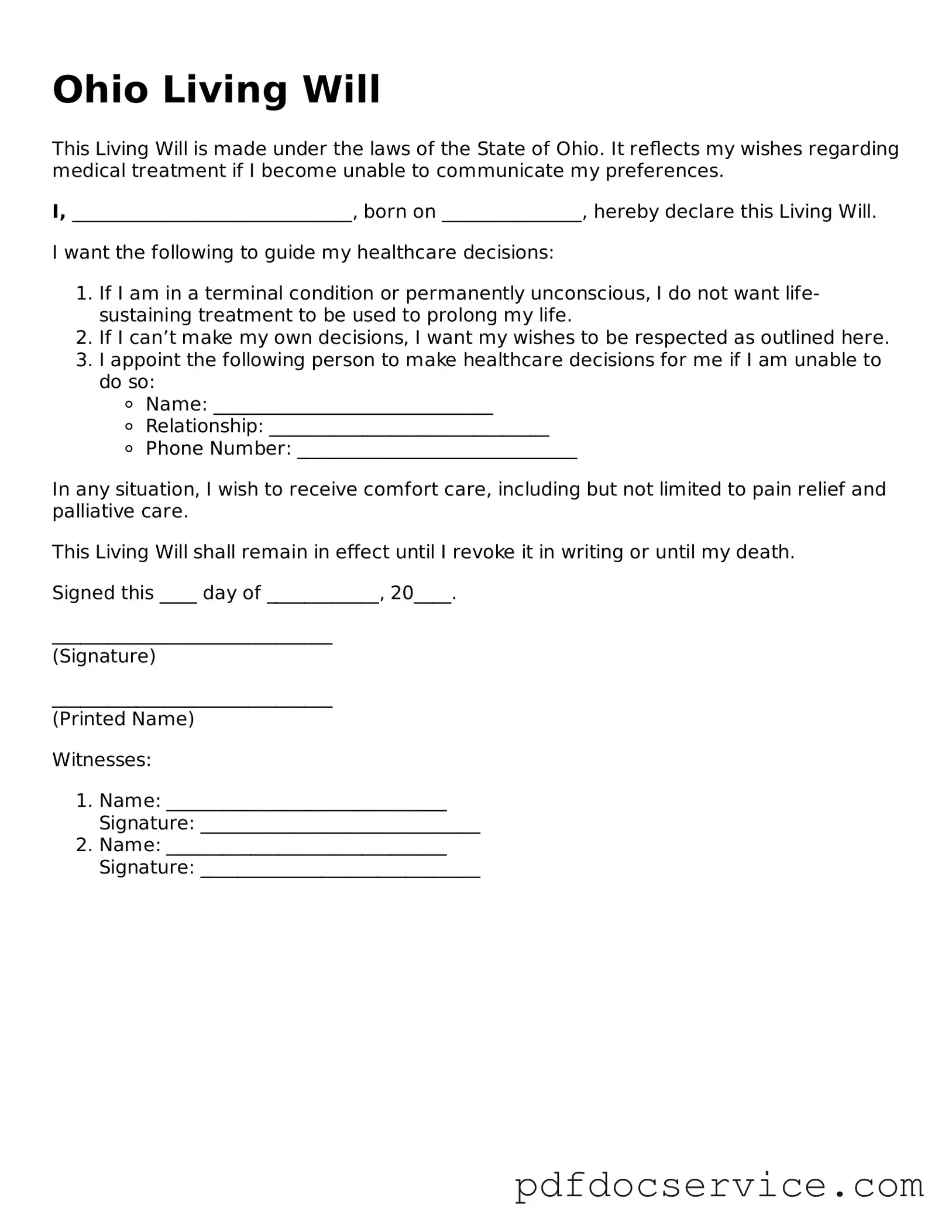In Ohio, the Living Will form serves as a vital tool for individuals wishing to express their healthcare preferences in advance, particularly in situations where they may be unable to communicate their wishes due to illness or injury. This legal document outlines specific medical treatments and interventions that a person does or does not want to receive, such as life-sustaining measures, artificial nutrition, and hydration. By completing a Living Will, individuals can ensure that their values and desires regarding end-of-life care are respected. The form typically requires clear and concise language to convey these preferences, and it must be signed and witnessed to be valid. Additionally, Ohio law allows individuals to revoke or modify their Living Will at any time, emphasizing the importance of personal autonomy in healthcare decisions. Understanding the nuances of this form can empower individuals to take control of their medical care and provide peace of mind for both themselves and their loved ones.
